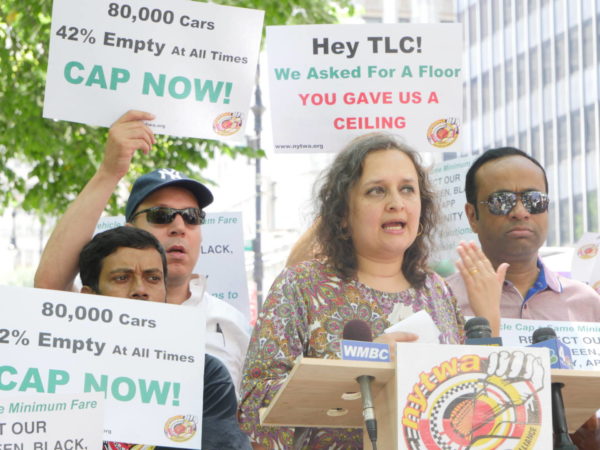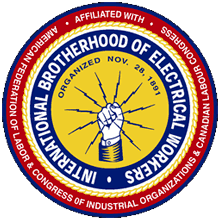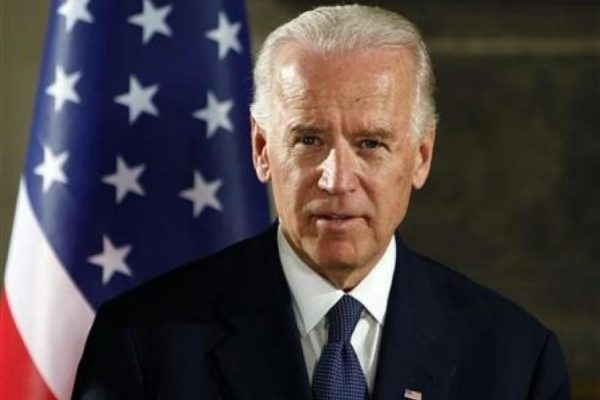NEW YORK, N.Y.—On the evening of Sept. 26, Uber driver Fausto Luna became the seventh New York City taxi driver to commit suicide in the last year, when he plunged under an A train at the 175th Street station, near his Washington Heights apartment. He was 57.

Relatives at his wake Oct. 4 told the Dominican Republic newspaper El Caribe that Luna had been depressed because he had accumulated debts that were impossible to pay. He was the first app-based driver among the seven suicides, and the third who was a Dominican immigrant, after Bronx livery drivers Danilo Corporan Castillo and Alfredo Perez.
While app-based drivers’ debt burdens aren’t as crushing as those of medallion owner-drivers, they’re still substantial, says New York Taxi Workers Alliance [NYTWA] Executive Director Bhairavi Desai, as they typically buy or lease their vehicles. “In this industry, everyone starts out in debt,” she says.
When Luna started driving for Uber in 2013, she explains, the company was advertising that drivers could gross up to $90,000 a year, so many drivers signed lease or purchase agreements for cars that would cost up to $80,000 over three years. Current rates from Uber-approved dealers, according to the union, include a minimum of $295 a week to buy a 2015 Hyundai Elantra or $345 to rent one, and $425 a week to buy a used 2015 Camry Hybrid or $475 to lease one. If expenses such as gas and insurance cost them $15,000 a year, that in theory would leave drivers making around $50,000, but reality didn’t work out like that.
There’s a lot of anger and frustration among drivers. Even though things are beginning to turn, change can’t come fast enough. — NYTWA Executive Director Bhairavi Desai
In January 2017, Uber agreed to pay $20 million to drivers to settle Federal Trade Commission charges that it “misled prospective drivers with exaggerated earning claims” and claims about financing leases through its Vehicle Solutions Program. Less than 10% of drivers actually grossed $90,000, the FTC said; their median before expenses was about $61,000. Especially after Uber cut fares and increased the share it took of them in 2014 and 2016, says Desai, most drivers cleared less than $30,000. A study released in July done for the city Taxi and Limousine Commission found 85% of app-based drivers earn less than $15 an hour.
Anger boiled over at a memorial vigil for Luna NYTWA organized outside the 175th Street station Oct. 7. After TLC Commissioner Meera Joshi arrived to pay her respects, a few drivers followed her down the block, shouting at her to “get out.” A TLC spokesperson told them, “You’re doing this for politics.”
Most of the people at the vigil were being solemn, Desai says, laying roses on the sidewalk in front of the station entrance, but “there’s a lot of anger and frustration among drivers. Even though things are beginning to turn, change can’t come fast enough.”
Joshi, she says, represented a convenient target as the face closest to the power structure of corporations and city regulators.
“Drivers know how much power the TLC has over their day-to-day lives,” she says. “It’s hard to fathom how they couldn’t control these corporations.”
NYTWA is now seeking “across-the-board” raises for drivers. For app-based drivers, that would include increasing the base “drop” fare from $2.55 or less to $3—what it was in 2014—and from $1.75 a mile or less to $3, back to what it was in 2013. It also wants a minimum wage of $10 per trip and $25 an hour gross before expenses. The TLC has proposed a $1-a-mile rate and no minimum wage, which NYTWA says would leave half of drivers making less than $15 an hour. The commission’s July study, the union says, “underestimates actual driver expenses by as much as $10,000 per year.
NYTWA is also escalating its mental-health and financial-help services for drivers, passing out information about suicide-prevention hotlines and helping drivers who are facing eviction or trying to consolidate loans.
“We can’t separate financial assistance from mental-health services,” Desai says. “Poverty is a very real cause of the hopelessness drivers feel.”



